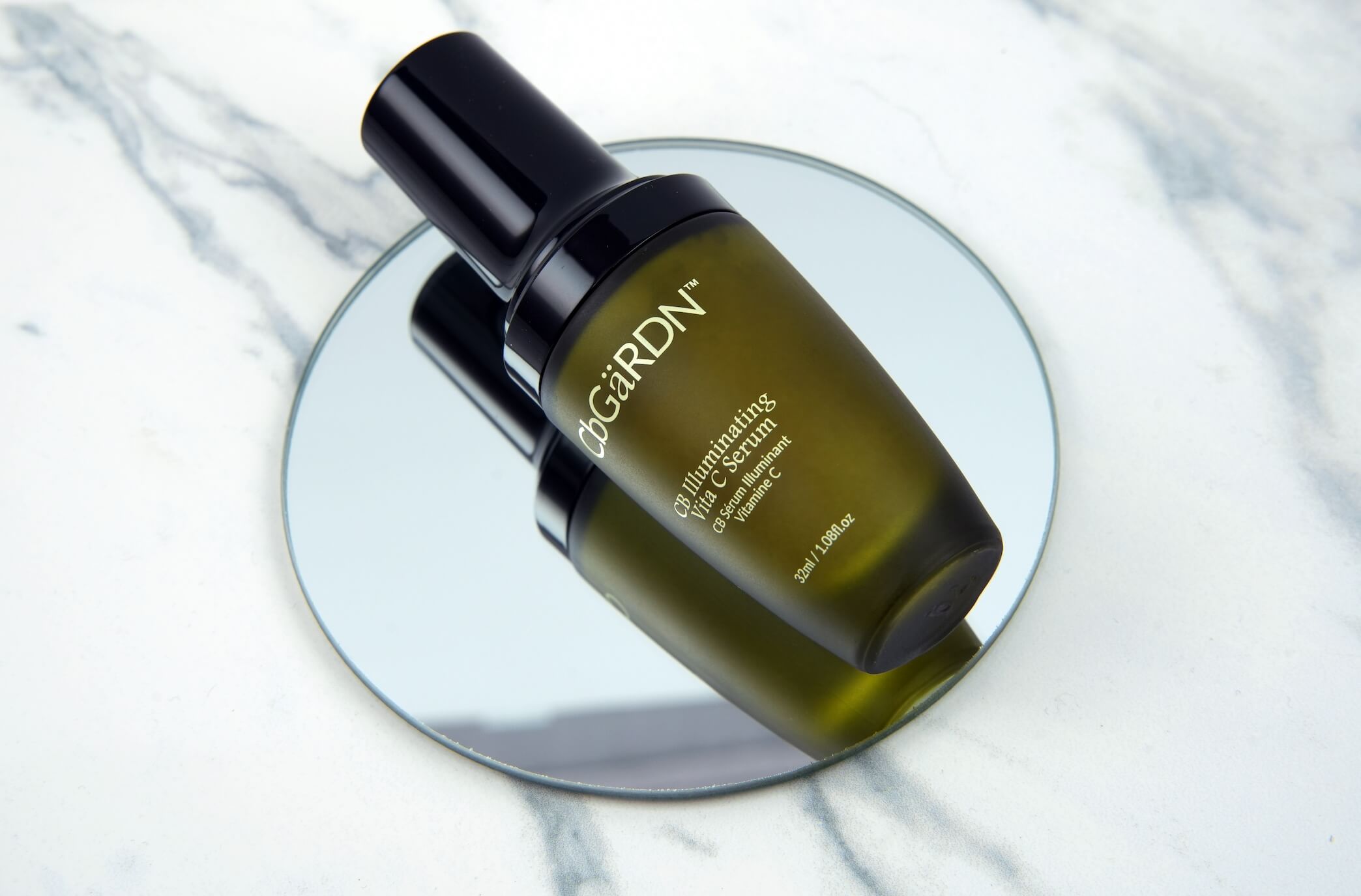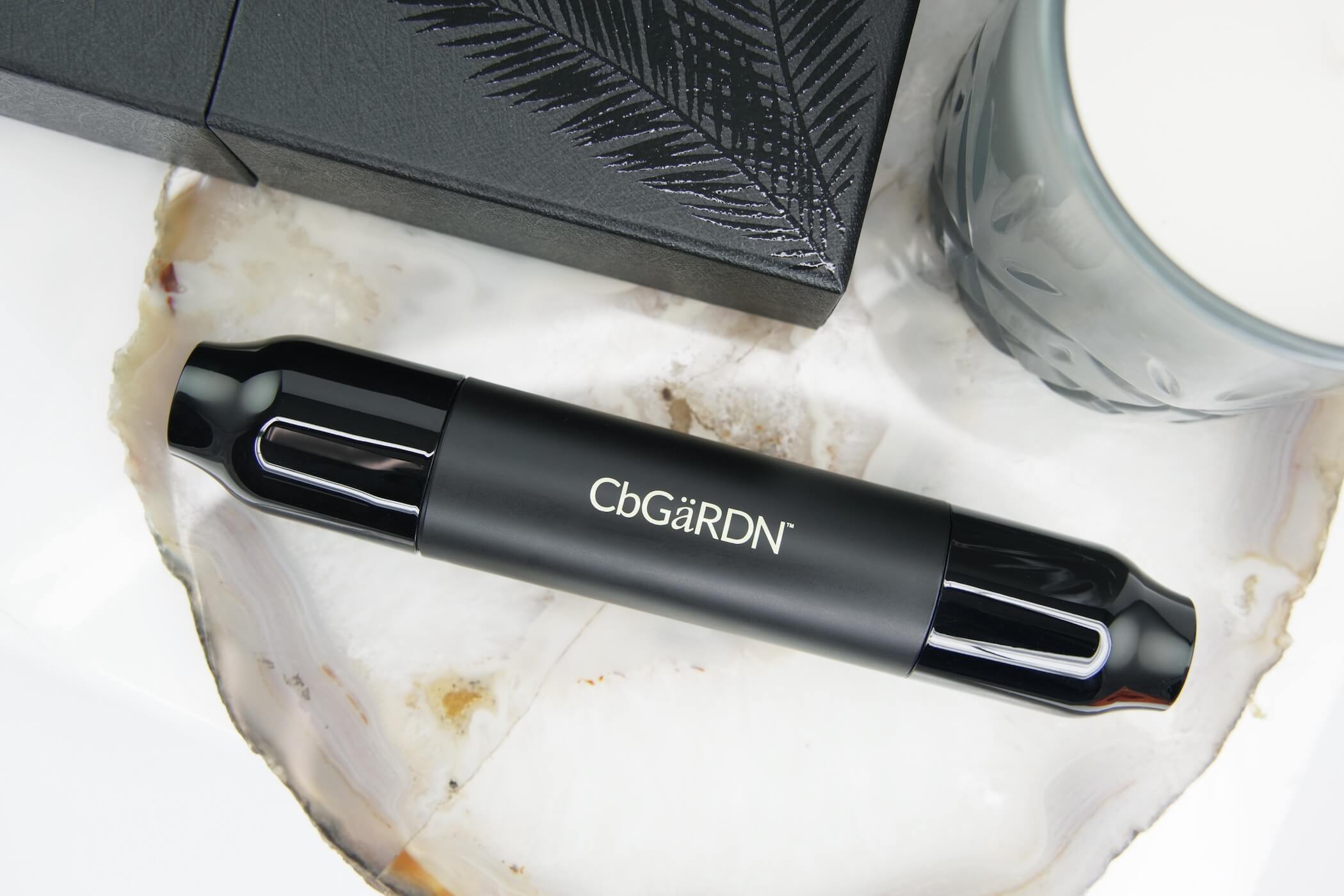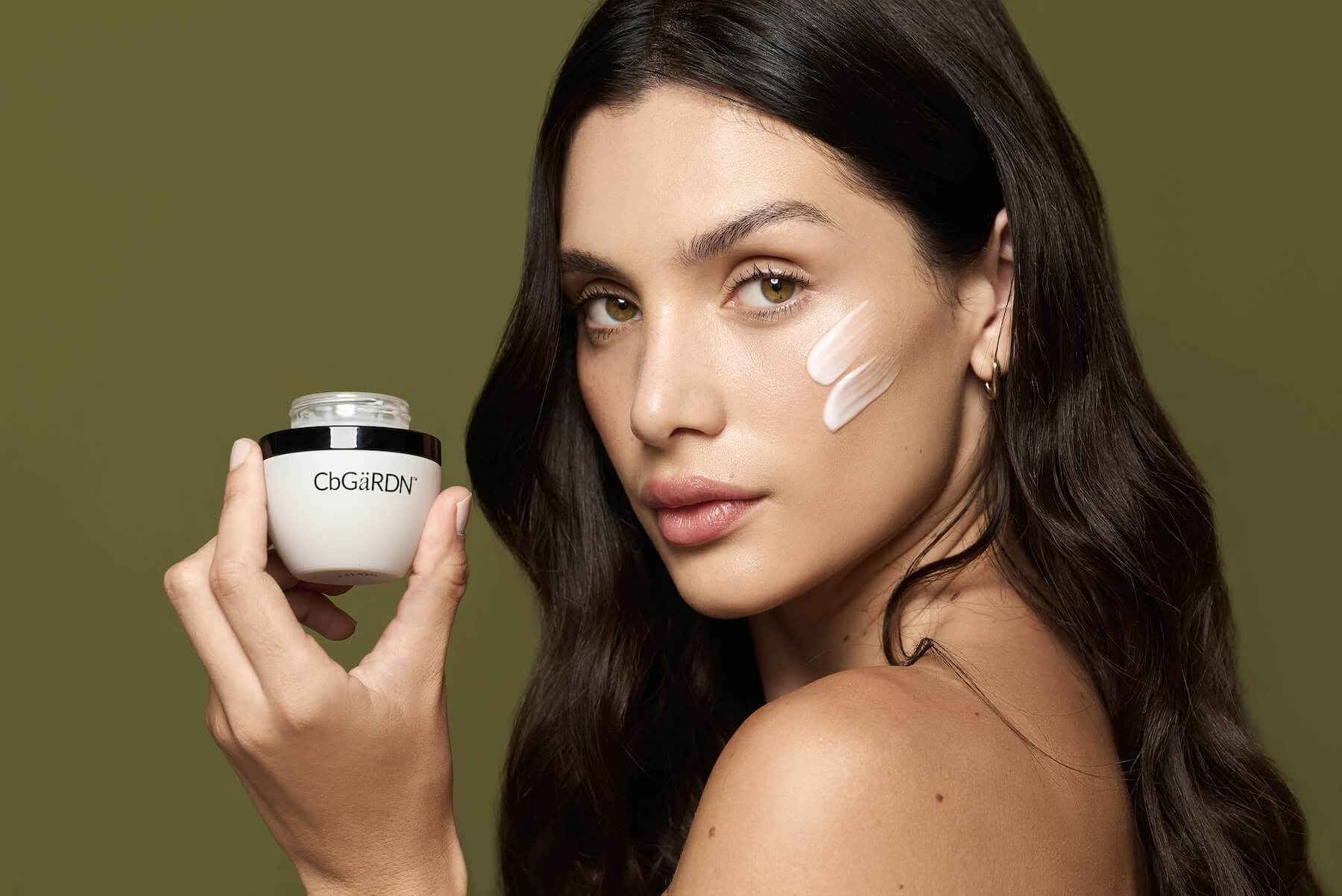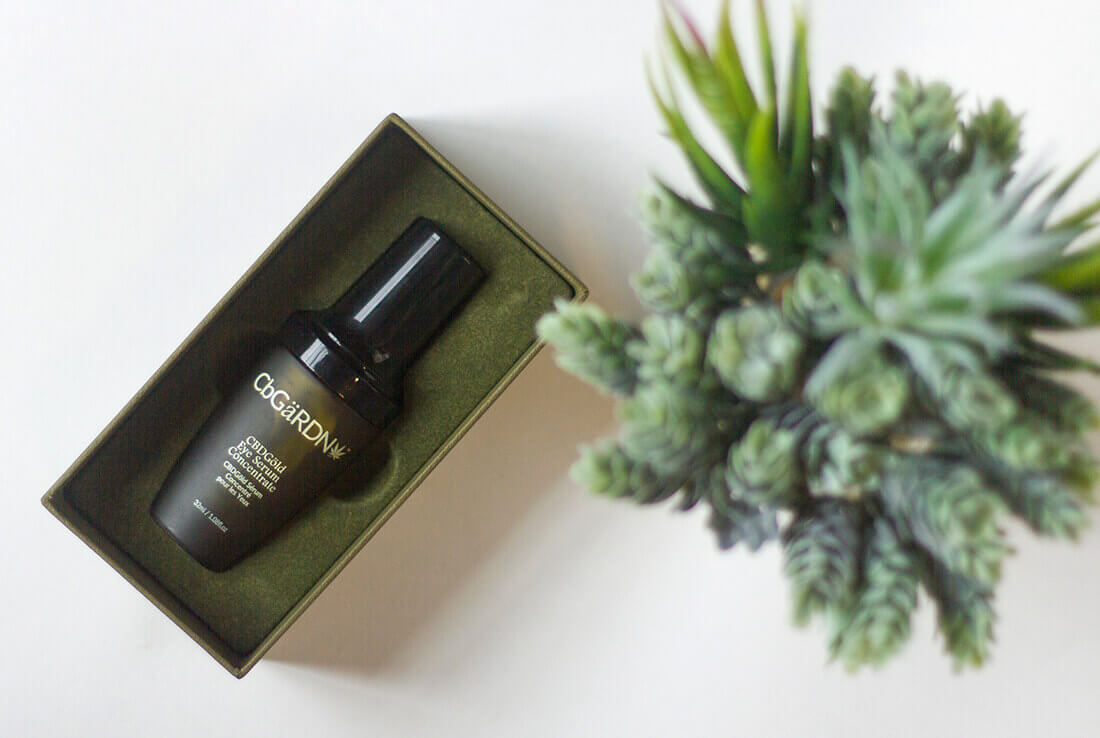Published: October 30, 2024

How much time do you spend staring at a screen each day? Statistics show that for the average adult, daily screen time amounts to around 6.5 hours. With modern technology allowing us to use our phones and laptops for everything from socializing to working to shopping, it’s hardly surprising that screen time has been steadily on the rise.
There’s no denying that all of that tech makes life more convenient. However, there’s also no getting away from the fact that it’s damaging your skin. The more time you spend with a screen shining at your face, the more harm your skin will experience.
What exactly does blue light do to your skin and, most importantly, what can you do to protect your complexion? Read on as CBGärdN explains!
What is Blue Light?
Blue light is all around us. It’s a high-energy wavelength of light that’s emitted by the sun, which is the largest source of exposure. However, it’s also emitted by digital devices. Although these release just a fraction of the blue light that the sun emits, the fact that these devices are held so close to the face for so many hours each day means that these devices are actually responsible for more blue light damage than the sun.
How Does Blue Light Damage the Skin?
Just like UV light, blue light exposure triggers oxidative stress in the skin. The free radical damage that this leads to slowly destroys the collagen and elastin fibers in the skin. These are the protein fibers that hold your skin up from within. The weaker they are, the more your skin will sag and wrinkle. Plus, the older you are, the less collagen and elastin your skin will naturally produce, making it much harder to restore the damage that occurs to protein fibers.
In addition to accelerating the onset of wrinkles, blue light exposure is also linked to hyperpigmentation. It causes some areas of the skin to turn darker than others, leaving the complexion discolored and uneven.
If that wasn’t enough, blue light also interferes with skin barrier function. It increases transepidermal water loss, leaving the skin susceptible to dehydration. With dehydration resulting in everything from peeling and flaking skin to excess oiliness and breakouts, this can be disastrous for your complexion.
How to Protect Your Complexion From Blue Light Damage
It goes without saying that if you want healthy-looking skin, you need to make an effort to protect your complexion from the harmful effects of blue light. How? Here are eight ways:
1) Add More Antioxidants to Your Skincare Routine

Nothing quite compares to antioxidants when it comes to repairing the appearance of free radical damage. These are the best ingredients for doing so, whether the free radical damage is due to blue light, sun exposure, or anything else.
All antioxidants are beneficial for this purpose but some are known to be more powerful than others. Vitamin C is one, with this being one of the most popular antioxidants around! Why? Because not only will it fight the look of blue light damage but it will also help your complexion in a multitude of other ways.
Ideally, add vitamin C to your skincare routine with a serum, such as the CB Illuminating Vita C Serum. This formula contains a form of vitamin C known as 3-O-ethyl ascorbic acid. It’s much purer than other vitamin C derivatives yet it’s also more stable than regular ascorbic acid itself.
2) Cover Your Skin With a Mineral Sunscreen
While you may think that a sunscreen only protects your skin from UV rays, certain formulas can actually help to protect against the appearance of blue light damage too. Mineral sunscreens are what you need for this. These products make use of two key ingredients; titanium dioxide and zinc oxide. The latter helps to block blue light from penetrating your complexion.
Of course, this means that you’ll need to keep your skin covered with your sunscreen at all times, even in the evenings when you wouldn’t normally wear sunscreen. In some ways, this can be inconvenient but the fact that you’ll be able to preserve your youthful appearance will make your efforts more than worthwhile!
3) Look for Skincare Products Containing Iron Oxide

Just like zinc oxide, iron oxide is another ingredient that acts as an opaque blocker. This means that it helps to shield your complexion from blue light and its associated damage.
However, while zinc oxide is most commonly found in sunscreens, iron oxide tends to be used in a much wider range of products. The CB Pro-Erase Revitalizing Treatment, for example, contains iron oxide. It’s designed to mask the appearance of skin aging, meaning that it targets the same visible skin concerns that blue light causes. It also happens to be loaded with antioxidants. Apply this solution to your skin and not only will you be able to do away with the look of blue light damage but you’ll also be able to prevent more from developing.
4) Prioritize Skincare Ingredients That Leave the Skin Barrier Feeling Stronger

The stronger your skin barrier is, the better equipped it will be to keep damage at bay. Unfortunately, with blue light disrupting skin barrier function, the skin barrier is often not able to cope when faced with all of this potential damage.
This is why it’s important to ensure that your skincare routine is tailored to keep your skin barrier feeling supported and strengthened. How? With the use of certain ingredients.
Peptides are definitely a must-have. These amino acid chains help to leave the skin barrier feeling thicker and more resilient. This will make it harder for blue light damage to take its toll. Sodium hyaluronate is another one. It draws moisture to the skin, giving the skin barrier a more fortified finish. You’ll find both of these ingredients in the CB Replenishing Serum. They’re joined by other compounds that are fantastic for the skin barrier, including grape stem cells, nettle leaf extract, and hawthorn berry extract.
5) Ramp Up Hydration

As we mentioned earlier, one of the effects of blue light on the skin is dehydration. This is partly down to how blue light inhibits skin barrier function. This means that the skin barrier isn’t able to retain moisture in the same way, which then leads to a whole host of other problems, some of which further exacerbate blue light damage.
To put a stop to this vicious cycle, work on giving your skin some extra hydration. Sodium hyaluronate, which we recommended above, is a great ingredient for doing so. This is due to its humectant properties, enabling it to bind moisture to the skin. There are several other humectants out there too, so try to incorporate as many as possible into your skincare routine. Give the CB Phyto Satin Finish Cream a try and you’ll be able to treat your skin to a long list of them!
6) Invest in Eye Care

The eye area really struggles with blue light damage. Why? Because the skin here is thinner. This means that it’s more easily damaged than the skin on the rest of the face. As a result, blue light exposure could end up causing wrinkles and discoloration around the eyes before those issues are noticed elsewhere on the face. It doesn’t help that spending lots of time in front of a digital device can sometimes cause people to unknowingly squint their eyes. This only makes those eye wrinkles even worse.
If you want to keep the appearance of blue light damage at bay as much as possible, pay extra attention to your eye area. Look for eye care products that do everything we’ve already discussed, meaning formulas that provide antioxidants, support the feel of the skin barrier, and deeply hydrate the complexion.
One such product is the CB Eye Serum Concentrate. With a blend of sodium hyaluronate, peptides, licorice root extract, aloe vera, and more, it will leave your eye area looking bright and healthy.
7) Dim Your Devices and Use Screen Protectors
The brighter the screen is on your digital devices, the more blue light will be emitted. Therefore, one way to reduce your skin’s blue light exposure is to dim your screens. This will immediately minimize the intensity of blue light that hits your skin, saving you from experiencing quite as much damage.
Another option would be to use a blue light screen protector. These are a great alternative to blue light glasses, which are designed to protect just the eyes. A screen protector will offset how much blue light is emitted from your device. This will not only shield your eyes but the rest of your face will benefit from this too.
8) Take Frequent Screen Breaks
Spending long stretches of time in front of a screen isn’t doing your skin any favors. Ideally, you want to give your skin regular breaks from blue light exposure so that it has some time to recuperate. In addition to benefiting your skin, this will also help with your eyes too, saving you from eye strain. Plus, your mental health should soar as well since regular tech breaks can help to reduce stress, increase focus, and improve productivity.
When you return to your screen after a break, try to ensure that there’s some space between your face and your devices. The closer you hold your devices to your face, the more blue light your skin will encounter. Instead, aim for a distance of about 12 inches.
Summary
Although it hasn’t yet been determined exactly how much damage blue light causes the skin, there’s no ignoring the fact that this damage does occur. This means that you should be taking the necessary steps to prevent this damage if you’re hoping for a healthy complexion. The tips that we’ve shared above would be a great place to start. Implement as many of them as possible and not only will you be saving your complexion from the harmful effects of blue light but you’ll also be able to repair the appearance of any existing skin damage.
Click here to shop for more bestselling skincare products from CBGärdN.
